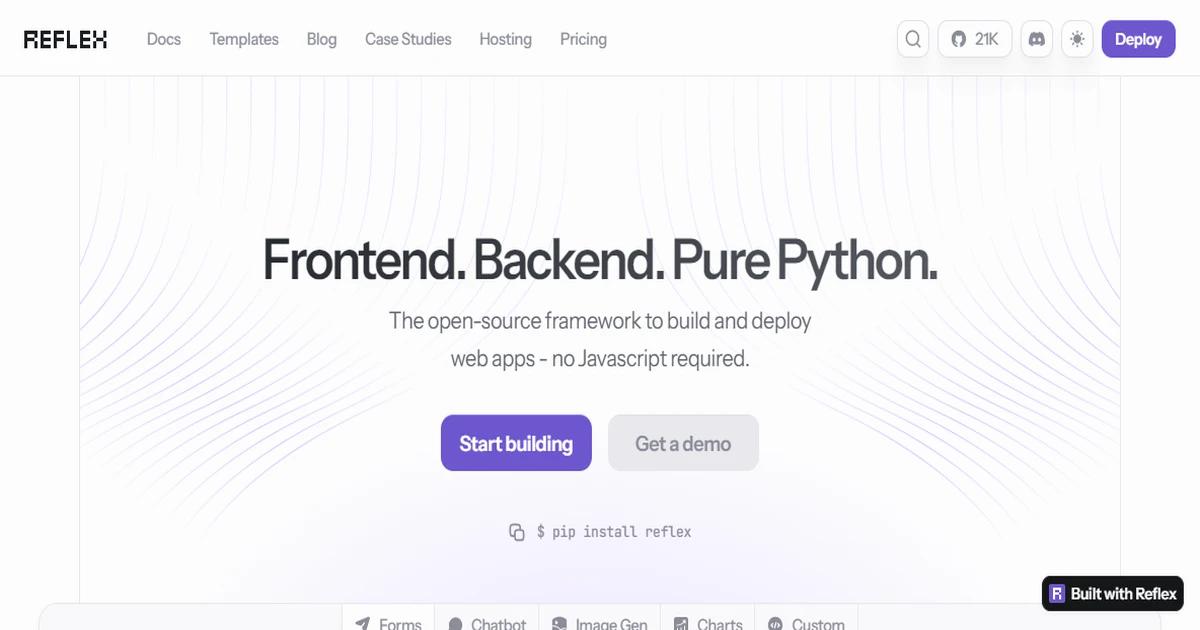
Reflex
Reflex is an open-source, full-stack Python framework that enables developers to build and deploy web applications entirely in Python.

Pricing
Tool Info
Rating: N/A (0 reviews)
Date Added: December 6, 2024
Categories
What is Reflex?
Reflex streamlines web development by allowing developers to create both frontend and backend components using pure Python.
The framework compiles the frontend into a React-based single-page application while managing backend operations with FastAPI, facilitating seamless integration between the two.
This approach simplifies the development process, making it accessible to those without extensive JavaScript knowledge.
Reflex offers over 60 built-in components, a theming system for consistent design, and the flexibility to wrap and utilize any React component, providing extensive customization options.
Additionally, Reflex supports features like state management, database integration, authentication, and responsive design, ensuring that applications are robust and scalable.
Key Features and Benefits
- Unified Development: Build both frontend and backend in Python, reducing context switching and simplifying the development workflow.
- Extensible Components: Access a library of over 60 built-in components, with the ability to wrap and use any React component for enhanced flexibility.
- Theming System: Apply a unified look and feel across the application with customizable themes.
- Seamless Integration: Utilize Reflex's built-in database or connect to external databases effortlessly; integrate authentication providers without vendor lock-in.
- Scalable solutions that can evolve from simple to complex applications.
- Fast setup for creating interactive web applications.
- Open Source: Licensed under Apache 2.0, allowing developers to view, contribute to, and modify the source code.
Use Cases
- Rapid Prototyping: Quickly develop and deploy prototypes without the overhead of managing multiple programming languages.
- Data-Driven Applications: Build interactive dashboards and data visualization tools with ease.
- Internal Tools: Create custom internal applications to streamline business processes.
- Educational Platforms: Develop educational tools and platforms that require dynamic content and user interaction.




